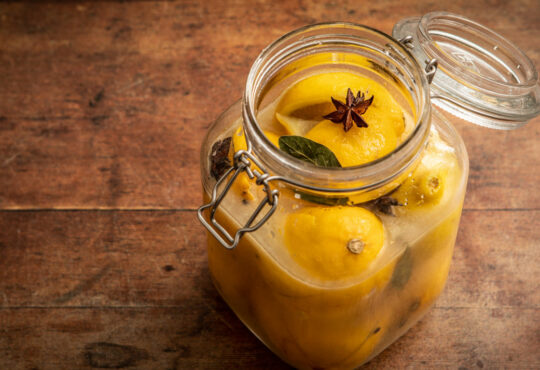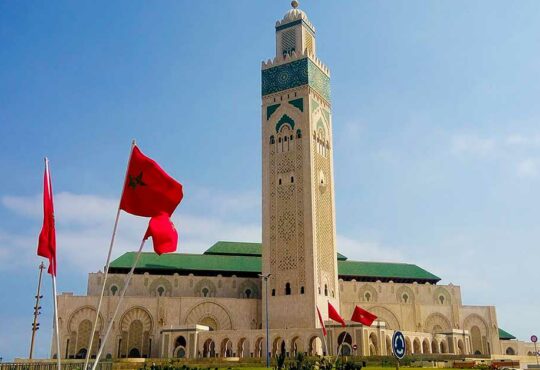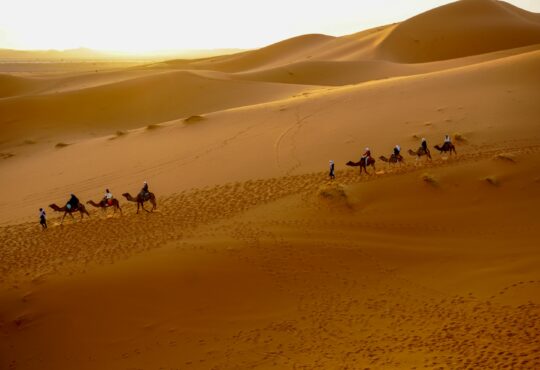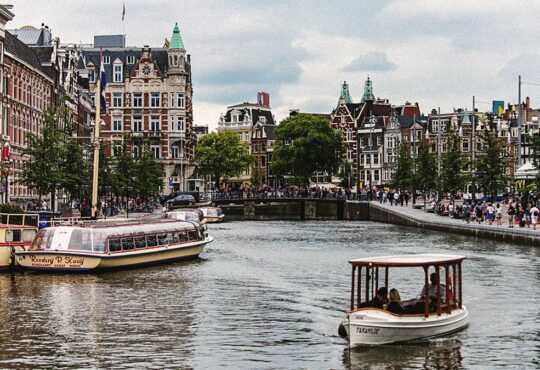When thinking of Africa, safaris, game watching, nature reserve, and wildlife probably come to mind first. Namibia has all of that, but much more. The Namibian nature is spectacular and will impress any traveler. Namibia has one of the largest canyons in the world, the rarest plants, a national park with stunning sand dunes. These are the top things to do in Namibia, including famous highlights and hidden gems.
You might also like | 18 Best Destinations in Africa
Road tripping and camping in Namibia
Visiting Namibia with an organized tour will bring you to all big highlights in a very comfortable way, but you’ll miss out on the adventure of road tripping and camping. The best way to explore Namibia is by renting a 4WD with rooftop tent, starting in the capital Windhoek after exploring the town for a day or two and then driving yourself all over the country. The highlight of Namibia might not be its tourist attractions, but driving in the many types of deserts while spotting wildlife from your car and enjoying rest stops at the most beautiful unearthly places.
Self-driving in a remote country like Namibia might sound dangerous, but most travelers will confirm that driving around Namibia is pretty safe. The roads are of good quality, especially the B- and C-roads which you’ll drive most of the time. Speeding and a collision with wildlife are the main causes for traffic incidents, but also easy to avoid by driving carefully. As the country is sparsely populated, you might want to learn how to change car tires and always bring plenty of water bottles with you.
A road trip also opens up the option of camping in Namibia. Rooftop tents aren’t unusual in Namibia and you can have up to two on a car, creating sleeping places for a maximum of four people. They are easy to set up and give you a safe feeling high up your car when wildlife is roaming around. There are many affordable campsites in Namibia, state-owned by the NWR or privately-owned. Most of them have a sanitary block, electricity, ‘braai’ for barbecuing, and running water to refill your water bottles.
The best camping spots in Namibia? The NWR-owned sites in the Etosha National Park close to waterholes with wildlife in the evenings and at the remote Skeleton Coast beach. And how about wild camping on an ancient volcano?
The Welwitschia Drive
Namibia is home to many rare plants and the welwitschia is one of them. As Namibia is a very dry desert-type of country, the circumstances for plants to grow are harsh. The welwitschia has found its way around this and can thrive in the Namibia desert for hundreds and even over a thousand years. You can find the plants at many places, but the best way to learn more about the welwitschia is at the Welwitschia Drive.
This small tour close to the coastal town of Swakopmund shows you the stunning Namibian landscape, focusing on the unique welwitschia plant. You can either book a tour from Swakopmund or drive the tour yourself. If you head out on your own, you only need half an hour to get to the start of the drive. The drive is about 160 kilometers. A visit makes a great half-day excursion from Swakopmund. The start is at the D1991-road close to town.
Make sure to get a park permit before you start your trip. The Welwitschia Drive is part of the Namib National Park and you’ll need a park permit from the NWR like you do in all national parks. You can buy one in both Swakopmund or the capital Windhoek, but not in the park itself. The NWR will also give you a map of the Welwitschia Drive with some background details of all 13 stops along the road.
One of your first stops will show you another rare Namibian plant: the lichen, usually orange-colored. It takes ages for them to grow and they are easily damaged. There are fewer lichen in Namibia and at the Welwitschia Drive each year, so you might need some luck to spot them.
Other stops show you some stunning landscapes, other plants, a valley, and more. The last part of the drive is all about the welwitschia. You’ll see these unique plants on the welwitschia plain while driving to the biggest and oldest welwitschia in the world. To protect its vulnerable root system, it is surrounded by a large fence. Make sure to not come too close to the other plants on the plain, as their root system might not be as big, but is equally vulnerable.
The Fish River Canyon
If this is not for you, Hobas is where you’d want to be. It has the best viewpoint of the Fish River Canyon, showing you the Hell’s Bend from a platform with seats and picnic spots. It is also the location of a state-owned campsite with camping spots and lodges, so you can enjoy the viewpoint during sunset when it’s at its best.
The south of Namibia has one of the largest canyons in the world, often compared with the famous Grand Canyon. You can only visit the bottom of the canyon if you’re making the 4 to 5-day hike from Hobas to the end of the canyon. It’s a tough hike which is only possible from May to September and you need to apply for a permit way in advance with proof of your fitness.
If you want to enjoy the spectacular canyon from other viewpoints, you’ll need a sturdy 4WD. From Hobas, some bad-quality gravel roads lead to other viewpoints along the canyon. As most tour groups don’t go there, you’ll more likely to visit those spots without any crowds – or even all to yourself.
The end of the Fish River Canyon is also worth a visit. It’s called Ai-Ais and has a state-owned campsite with lodges and camping spots. It is the end of the multi-day hike and has everything you’d want after such an experience: a spa, massages and heated pools, all heated by natural hot springs.
The Sossusvlei sand dunes
When researching your Namibia trip, you’ll probably first see stunning images of the Sossusvlei. This national park is famous for its endless sand dunes and some of the valleys in between.
It’s probably those valleys you’ll see on all those photos. The valleys – or ‘vleis’ in the local language – are white clay pans, surrounded by yellow and orange sand dunes. Some valleys have ancient dead trees, creating black silhouettes against a magical white-orange backdrop. The national park might be named after the Sossuvlei, but is not the valley with the most stunning views and tree silhouettes. Neither is the well-visited Hidden Vlei. The Dead Vlei is the most beautiful place in the national park.
The entrance of the national park of Sesriem. A 60-kilometer road leads from Sesriem all the way to the Dead Vlei and Sossusvlei, passing stunning sand dunes like the popular Elim Dune (sunset) and Dune 45 (sunrise) and the 2WD parking. From the 2WD parking, you can pay for a drive further down to the Hidden Vlei and Sossusvlei.
If you have a 4WD, you can drive there yourself. It is highly recommended to get to the park gates first thing in the morning and drive your 4WD straight to the 4WD parking. Visit the Dead Vlei without the crowds or watch the sunrise from the biggest sand dunes in the valley, the Big Daddy and Big Momma. Most other visitors will head to Dune 45 first, so this is the best moment to visit the best part of the national park all by yourself or at least without the big groups.
The Brukkaros volcano
One of Namibia’s hidden gems is the Brukkaros volcano. It’s not actually a volcano, as it never really erupted but imploded, leaving a crater-like shape you can even see from the plane.
A 2WD will bring you to the base of the volcano, but a 4WD will bring you almost to the top of a deserted campsite. It is only a 30- to 40-minute hike from the campsite to the crater edges. The crater isn’t what you might expect from a volcano, as there is no volcanic activity. You’ll see a mountain-like landscape with rocks, white crystals and trees. You can continue hiking to the top. In about 45 to 60 minutes you can climb to the old observatory ruins. You’ll have a stunning view of the Namibian landscape from there.
Hiking the volcano is a great experience, but it’s even better to park your 4WD and set your tent at the deserted campsite. There aren’t any facilities, but camping at this remote place is a magical experience. You’ll probably never see stars this bright.
The Brukkaros is located close to the main B1-road from capital Windhoek to the southern borders. You’ll have to leave the B1 at the town of Tses until you reach the junction with the D3904.
Etosha National Park
You can’t leave Namibia without exploring its most famous national park. Etosha is located in the north of Namibia and can easily entertain you for days.
Etosha can be visited with an organized tour, but is actually famous for its self-drive safari experience. A 2WD will do you, as the roads aren’t too bad and you’ll have to drive slow around this wildlife reserve anyways. Spend at least two days in the park, driving around the national park to spot the Big Five.
You can spend the night in the park itself at one of the many campsites. The campsites are created next to the most popular waterholes and offer you the opportunity to stay late in the park and head out early, when wildlife is most active. Especially the Okaukuejo Resort is known for its waterhole which attracts both rhinos and elephants. Make sure to book a camping spot or lodge in Etosha National Park well in advance, when traveling in high season. You probably don’t need a booking in the low season.
Written by Maartje from The Orange Backpack





